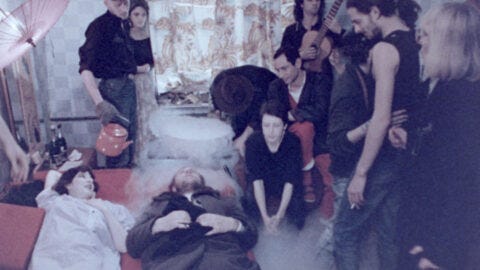The Asthenic Syndrome Sleeps Through the End of History
35mm, Arsenal Kino
How do you imagine the end of an era? When stasis, moral rot, corruption and a dearth of ideals have set in, calcified — blanketed a people in an impossible state of sadness. How do you point forward to a new nation, a new way of thinking, a new reality?
In the world of Kira Muratova’s glasnost masterpiece The Asthenic Syndrome (1989) — made in Odessa during the death throes of the Soviet Union and playing as part of a retrospective at Arsenal Kino, Berlin — such a concept is impossible. The exhaustion is too palpable. All you can do is sleep. Only sleep, the cousin of death, allows you to momentarily escape your all-too-permeable, miserable, meaningless existence.
On paper, it sounds absolutely soul-destroying. On 35mm film, courtesy of the Dovzhenko Centre, it thrums and crackles with life, wit and a true sense of awe. I’m usually skeptical of hyperbolic statements, but only hyperbole can suffice in the case of describing Muratova’s titanic, era-defining achievement: this is one of the greatest films ever made.
Read more over at Journey Into Cinema.
Suzume Soars, Shines, then Sinks.
Suzume (2022) concerns two overlapping worlds: the real one and the ever-after. There are both ancient gods lingering below the surface and people on earth tasked with keeping them out. There are also two contrasting animation styles — the everyday, observational 2D animation you might find in a Studio Ghibli film or YouTube lo-fi playlist cover art with advanced, cutting-edge computer wizardry pushing the boundaries of modern anime.
Simply put, this is a Makoto Shinkai film.
Read more over at Journey Into Cinema.




